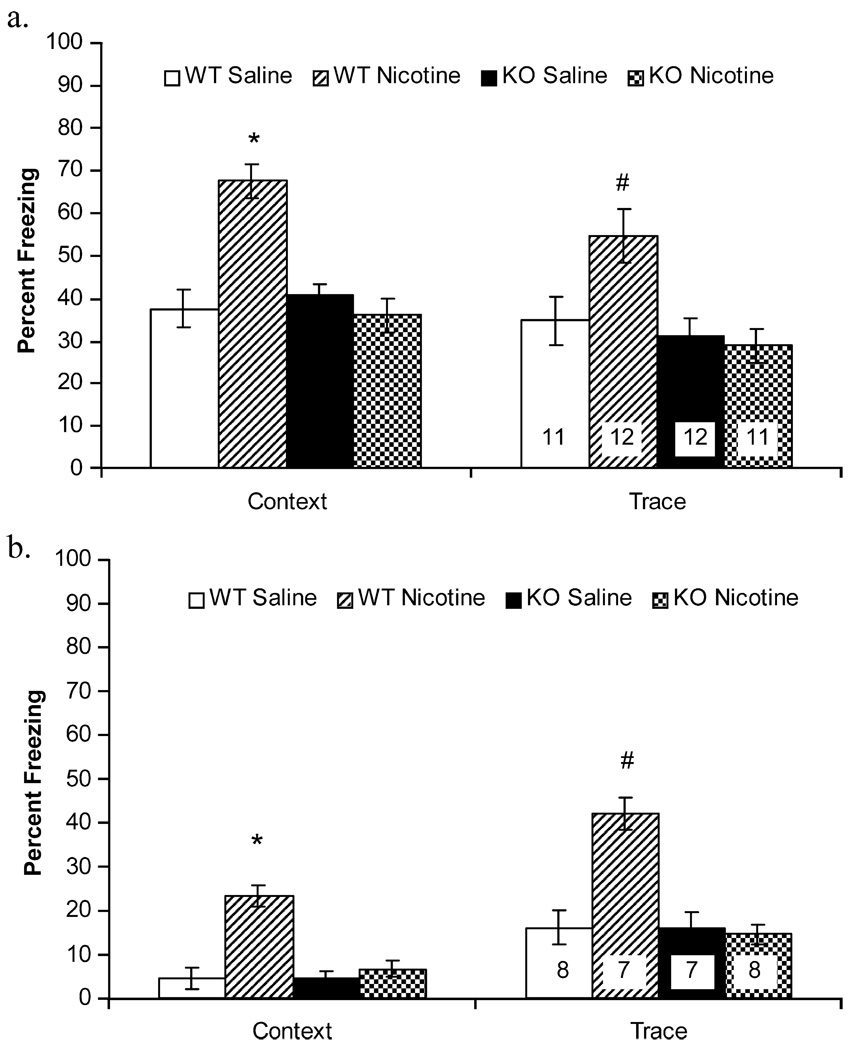Figure 1.
The effects of nicotine (0.09 mg/kg) administration on contextual and trace cued fear conditioning in β2 WT mice and β2 KO mice were examined. a Mice were trained using 5 CS (30 s, 85 dB white noise)—trace (30 s)—US (2 s, 0.570-mA footshock) presentations. Pairwise comparisons revealed that nicotine administration enhances the acquisition of both contextual fear conditioning and trace cued fear conditioning in β2 WT mice but not in β2 KO mice. Error bars represent ±1 SE from the means. Asterisk, number sign significantly different (p<0.05) from all other groups (for contextual and trace fear conditioning respectively). b β2 WT and β2 KO mice were trained using a 0.285-mA footshock US. Nicotine administration enhanced the acquisition of both contextual fear conditioning and trace cued fear conditioning in β2 WT mice but not β2 KO mice. Error bars represent ±1 SE from the means. Asterisk, number sign significantly different (p<0.05) from all other groups (for contextual and trace fear conditioning respectively). The numbers of mice per group are presented in the trace fear conditioning bars; the same mice were tested for contextual and trace cued fear conditioning

